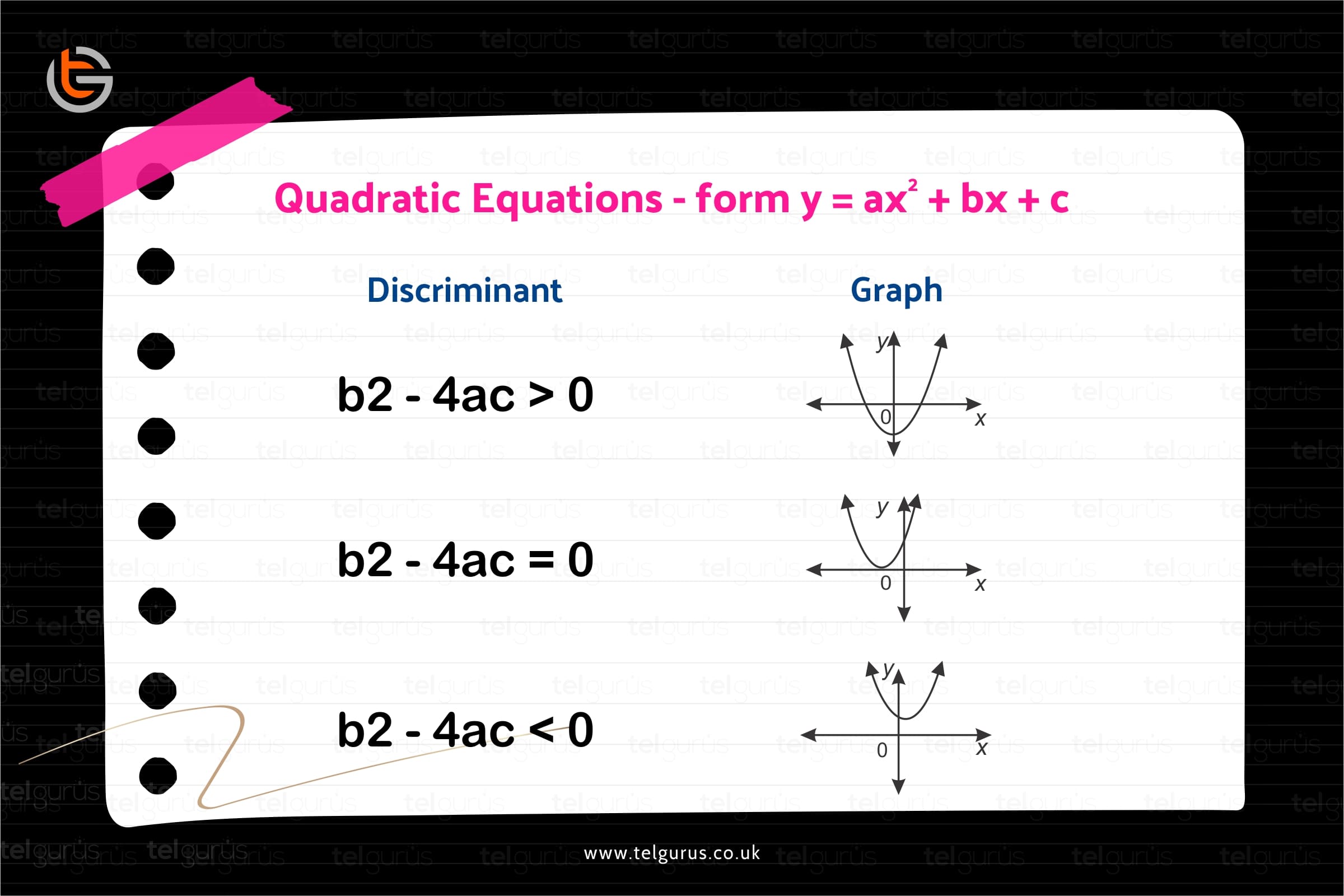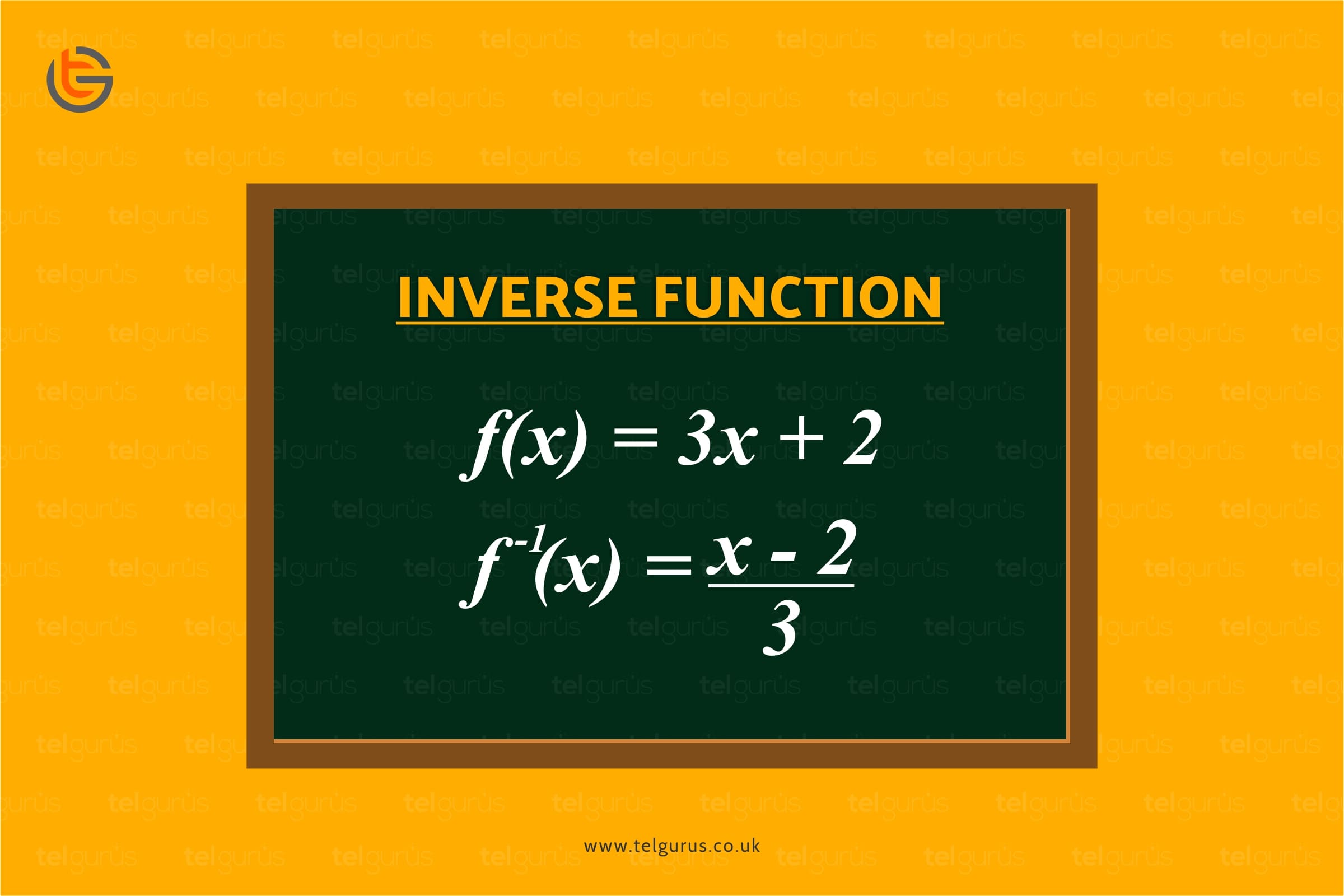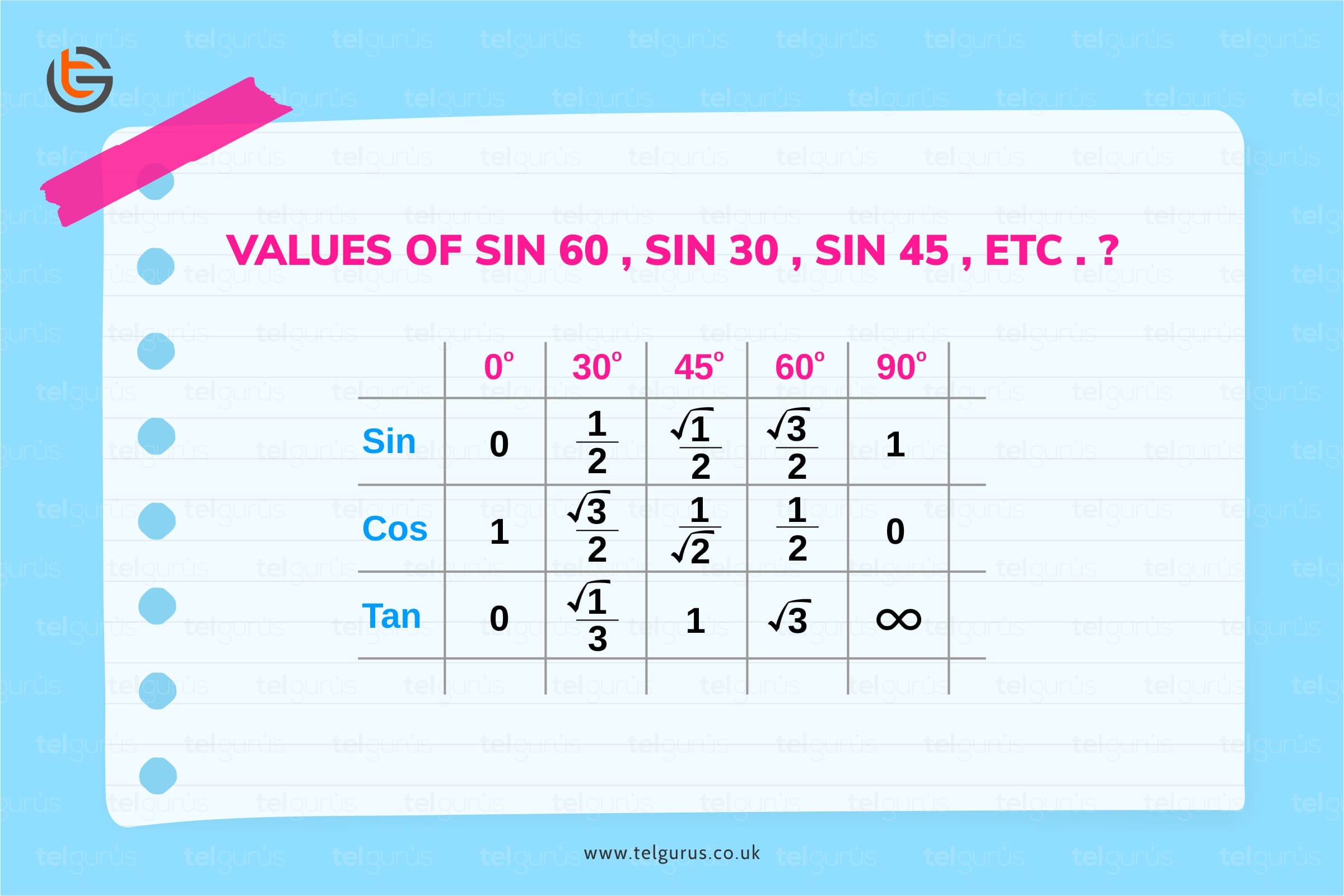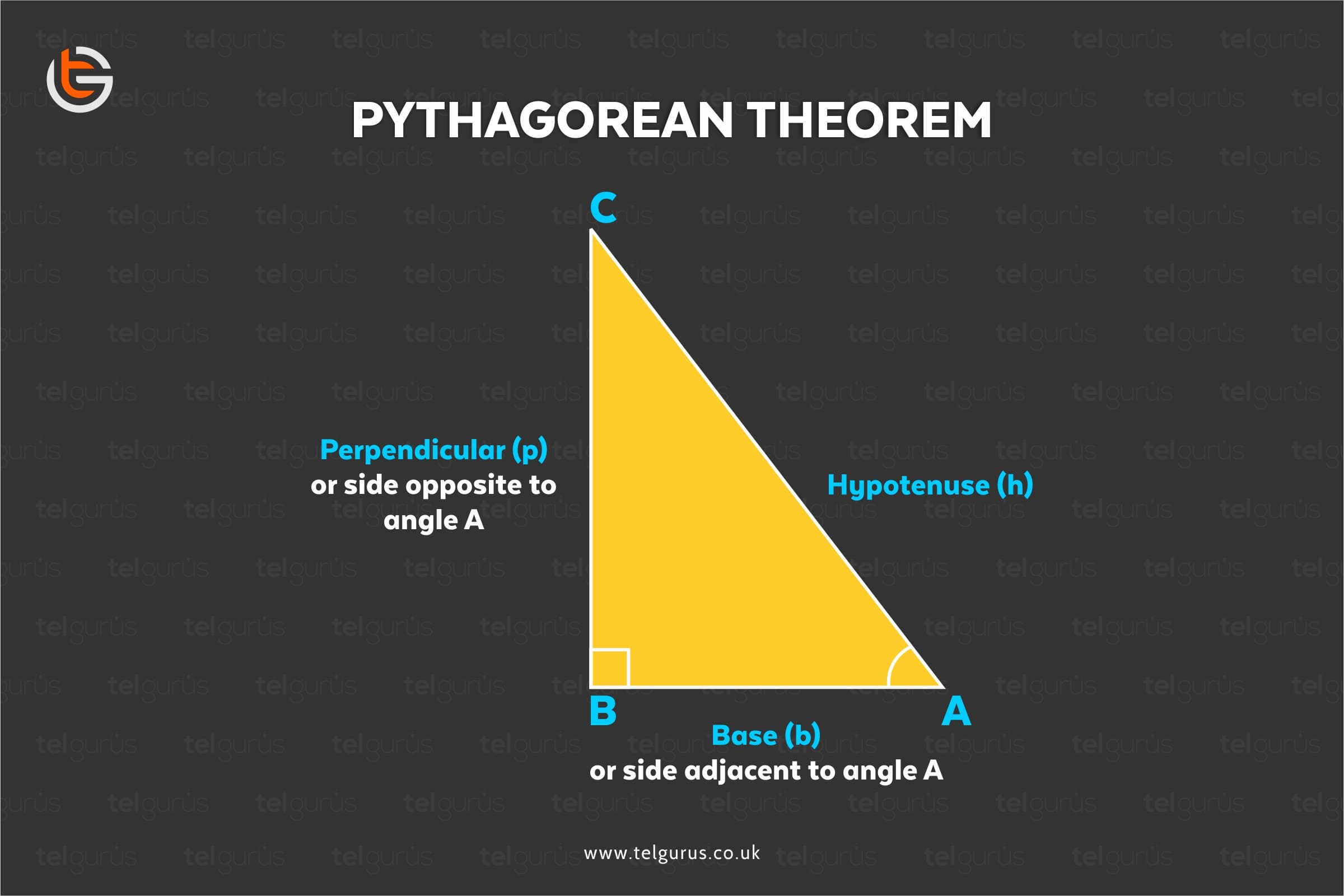Any equation having an algebraic term or variable in the power of two is called quadratic equation.
Every quadratic equation has one, two or zero roots. These can be real, imaginary or not defined. These roots are also known as zeros of the equation or x-intercepts.
A quadratic equation is written as \displaystyle a{{x}^{2}}+bx+c=0
where a ≠ 0 and is represented by a parabola when the coordinates are plotted on a graph.
Roots of a quadratic equation
Solving a quadratic equation means solving the equation for the zeros or roots of the equation.
The number and types of roots are determined with the help of Discriminant.
The roots for any quadratic equation are given by
x=\frac{{-b~+~\sqrt[{}]{{{{b}^{2}}-4ac}}}}{{2a}} and x=\frac{{-b-~\sqrt[{}]{{{{b}^{2}}-4ac}}}}{{2a}}
This formula is also known as quadratic formula. The term \displaystyle {{b}^{2}}-4ac is called the discriminant.
Discriminant plays an important role in calculating the roots of the equation as it helps in determining how many roots the equation has.
Three scenarios are there:
- If b2 – 4ac < 0, then there are no real roots. The roots are undefined.
- If b2 – 4ac = 0, then there is only one real root.
- If b2 – 4ac > 0, then the equation has two real roots.
Lets’ discuss these cases in detail.
Scenario 1: No Real Roots
If the discriminate is less than zero which means it is less than zero.
When plotted on graph, the parabola does not intersect with the x-axis. The negative discriminant means calculating square root of a negative number which is in either case is not defined over the real line.
For example: let the quadratic equation be \displaystyle {{x}^{2}}-3x+4
D = \displaystyle {{b}^{2}}-4ac = \displaystyle {{(-3)}^{2}}-4*1*4
= 9 – 16
= -7
The graph of this parabola will never intersect the x-axis and therefore has no real roots.
Scenario 2: One Real root
If the D is zero, this means that there is one single point on the graph where the parabola crosses the x-axis.
To calculate the point, we set \displaystyle {{b}^{2}}-4ac = 0~ in the quadratic formula. The roots become
x=\frac{{-b\pm \sqrt[{}]{0}}}{{2a}}=\frac{{-b}}{{2a}}Let’s understand with an example:
Let, \displaystyle -4{{x}^{2}}+12x-9 = 0~ be the equation
D = \displaystyle {{(12)}^{2}}-4*(-4)*(-9)
= 144 – 144
= 0
As the D is zero, we can determine that this quadratic equation has just one root.
x = -b/2a = -(12) / 2*4 = -3/2
Scenario 3: Two real roots
If D > 0, this means that the equation has two real roots or x-intercepts on the graph.
The two roots or x-intercepts are defined as
x1 = \frac{{-b~+~\sqrt[{}]{{{{b}^{2}}-4ac}}}}{{2a}} and x2 =\frac{{-b-~\sqrt[{}]{{{{b}^{2}}-4ac}}}}{{2a}}
Let’s take an example and understand the concept:
Find the roots of \displaystyle 2{{x}^{2}}-11x+5=0
To find the roots, we will first calculate the discriminant i.e. b2 – 4ac
D = \displaystyle {{(-11)}^{2}}-4*(2)*(5)
= 121 – 40
= 81
Since D is greater than zero, this means the equation has two real roots which are:
x1 =\frac{{-\left( {-11} \right)~+~\sqrt[{}]{{81}}}}{{2*2}} = \frac{{11~+~9}}{4} =5
And, x2 = \frac{{-b-~\sqrt[{}]{{{{b}^{2}}-4ac}}}}{{2a}} = \frac{{11-~~9}}{4} = \frac{1}{2}
So, we can see that the equation has two real and non-zero roots.
Read More – Mathematics Questions
View More – Useful links for Your Child’s Development








